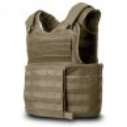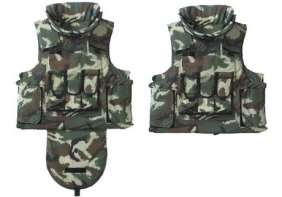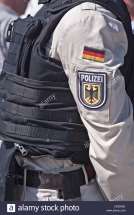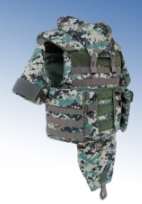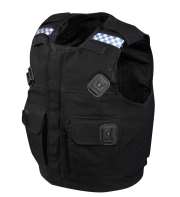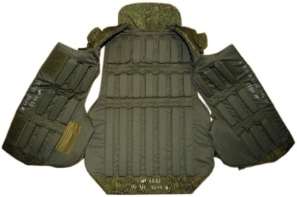Technical Textiles History, Technology and Types
Â
Technical Textiles Coursework
In early years, the textile industry was primarily established as apparel and fashion industry. As human advanced, the industry expanded into scientific and technological sector. That defined a new role for textiles and it led the industry to adapt and further develop new applications. It is now known as new field of textile “technical or industrial textile” [1].
Definition of technical textile
According Textile terms and definitions [2] “Technical textiles are defined as textile materials & products manufactured primarily for their technical performance and functional properties, rather than for their aesthetic and decorative it characteristics”.
History of technical textile
Technical textile sector started growing with the production of synthetic yarn in the early 1900s. Before that, chemically treated natural fibres were used to achieve desired properties of the technical fabric.
Manufacturers also developed special technologies such as various weaving and nonwoven techniques. It resulted into fast growth of high performance fibres/yarn. Production proceeded with notable characteristics such as 1) High resistance to temperature and chemicals and 2) Enhanced mechanical properties.
Raw material for technical textiles
The most desirable form of raw material is fibre, yarn or fabric.At present, most of the technical textiles are made of high-performance synthetic fibre that gives an advantage to technical textiles in many ways for e.g. cost, performance and durability. However, Raw materials have changed over the time according to the application[3].
Â
|
Natural staple fibre |
Synthetic filament yarn |
|
|
Â
Technology used for manufacturing of technical textile
Out of diversified operations, prominent processes used for technical textiles are[4]:
- Knitting
- Weaving
- Braiding
- Nonwoven
- Tufting
Â
Other than this, new manufacturing techniques to produce technical textile are as listed below. Most of these processes are used in combination to producedifferent fabrics.
- Thermo-forming
- 3D (Three Dimensional) Weaving
- 3D Knitting
- Fabrics Produced Using Nanotechnology
- Heat-set Synthetics
- Finishing Treatments (Coating and lamination)
- Handmade elements such as Stitch/Appliqué
Classification of technical textile
There are below mentioned 12 categories for technical textiles that exist [5],
|
No. |
Category |
Symbol [] |
Target Industry |
Example products |
|
1 |
Agrotech |
|
Agriculture, forestry, horticulture and landscape gardening. |
Various types of nets such as Bird protection, Anti-hail and Fishing nets. Also, mats or ground covers |
|
2 |
Buildtech |
|
Membrane like and lightweight solid structures. |
Architectural membranes, Awnings or canopies, Floor covering, Hoardings and Scaffolding nets |
|
3 |
Clothtech |
|
The Latest developments in shoe and clothing manufacturing. |
Elastic narrow fabrics, Hook & loop tape fasteners, Labels, Sewing threads, Shoelaces and Umbrella fabrics |
|
4 |
Geotech |
|
Road construction, civil engineering products. |
Geo variants of composites, grids, mats, membranes and nets. |
|
5 |
Hometech |
|
Furniture, upholstery, floor coverings and carpets. |
Window blinds, Carpet backing cloths, Filter fabrics for vacuum cleaner and HVAC filters. |
|
6 |
Indutech |
|
Mechanical engineering and for the chemical and electrical industries. |
Absorbent glass mat, battery separators, Coating abrasives, Composites, Computer printer ribbon, Conveyor & Drive belts. |
|
7 |
Medtech |
|
Medical and hygiene products. |
Artificial organs, heart valves and joints. Also, Baby diapers, Contact lenses and Sanitary napkins. |
|
8 |
Mobiltech |
|
Ship and aircraft construction, other automobiles. |
Automobile interior carpets, airbags, Car upholstery seat cover & body covers and helmets. |
|
9 |
Oekotech |
|
Environmental protection, waste disposal and recycling. |
Filter systems (air/water), Landfill textiles, Soil seals, Textile drainage systems and Erosion prevention systems |
|
10 |
Packtech |
|
Packaging, covering and transportation industry. |
Flexible intermediate bulk containers, Jute products, sacks, Leno bags, and Soft luggage. |
|
11 |
Protech |
|
Personal and property protection. |
Bulletproof jackets, Fire flame retardant apparel & fabrics, High altitude & visibility clothing, |
|
12 |
Sportech |
|
Different sport and leisure activities. |
Artificial turf, Parachute fabrics, Sail cloths, Sleeping bags and Swimwear |
Â
Detailed information on three applications:
1 Protective textile (protech)
Protective textiles are made from textile-based material to protect the user from various hazard and critical conditions, which could affect on person life. Mostly used in civil, military, hospitals and manufacturing industries[6].
Selection factors for designing:
- Clothing configuration of components and options
- Sizes
- Ease of pull on and take off
- Clothing construction
- Space for other selected ensemble equipment
- Comfort and restriction of mobility
- Selection type of protection according to the surrounding.
Fibres used for making:
- Meta-Para aramids for high resistance to tear and tensile strength
- Wool viscose polyamide for repellency of molten metal, heat insulation and transparency.
- Glass fibre for High resistance and insulation.
- Modacrylic cotton for electric arc flash protection, comfort and flame-resistant. it can also be used as efficient skin friendly and antistatic fibre.
- Polyamide for extreme resistance and low ageing
- High-performance polyolefin fibre
Types of Protective Textiles
Ballistic Protection Garments
- Garments manufactured under this category are under high standards by the different government authorities (for e.g. NIJ – and HOSDB -) on the basis of type and the level of a threat produced by a projectile.
- Fibres used for manufacturing these segment are normally very efficient to protect against penetration of sharp object. They are able to absorb a high amount of energy due to their high modules; elasticity; tenacity and low density. Most of the bullet resistant armor uses multiple layers of woven fabric. A higher number of layers define the degree of protection.
- Hard armor has ceramic or metal plate with polymer backings, which prevents a body from the force of projectile and brittle fragmentation of the plate.
- Soft body armor is mainly used for lower ballistic threat or cut resistance from knives, needles and Sharpe objects. Close weave with film lamination and abrasive coating are normally used to improve penetration resistance.
Physical requirements of the fabric
- High durability and dimensional stability
- lightweight and low bulk
- Good handle and drape
- Low noise emission
|
|
|
|
www.securityprousa.com |
http://www.smgroupindia.com/ |
|
|
|
|
http://c8.alamy.com |
DOYENTRONTEX® Bulletproof (http://www.bjtyz.com) |
|
|
|
|
www.safeguardarmour.co.uk |
http://www.worldmilitary.org |
Blunt Impact Protection Textiles
- Such textiles protect the wearer against injuries produced by blunt impacts.
- For the people involved in corrections and military troops, the protection against blunt impact threats can be a matter of survival.
- Technical standard for such fabrics are established over the years by government agencies. A balance is required between protection and functionality to have good flexibility and mobility for user.
- Good air circulation underneath the PPE suit can protect users against heat stroke or hyperthermia.
- This includes protection from vehicle accidents, falls, and physical assaults with weapons like bats and metal bars.
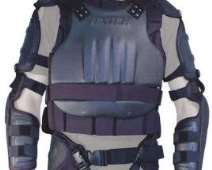
Pressure Hazard Protection
Used for protection against extremely high and low external pressures such as; deep sea diving, space and fighter aircraft.
Fully air impermeable suits and can withstand extreme conditions and they have a dedicated air supply support system.
Generally, these suits are made using the textile materials such as Nylon tricot knitted fabric, Spandex, Urethane-coated Nylon, Dacron, Neoprene-coated Nylon, Mylar, Gortex, Kevlar, Nomex.

Environmental Hazard Protection
Generally used for survival and operation in temperatures below-30 °C. Such garments are multi-layered and consist of:
- Non-absorbent inner layer
- Middle insulating layer capable of trapping air but permeable to moisture
- An outer layer that is impermeable to wind and water
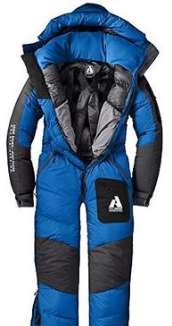
Fire Hazard Protection
Â
Flame resistance in fabrics are produced using flame resistant materials and fibres such as,
- Nomex
- Polyamide & Polypropylene
- Kevlar
- Carbon
- Glass
- Propane treated cotton
- Polyester
- Modacrylic
Fire Fighter’s clothing contains a flame resistant inner layer with moisture and thermal barrier lining.
Outer Casing provides flame , thermal and mechanical resistance.
This layer must be suitable for all climatic conditions. The moisture barrier to keep the firefighter dry and must prevent water penetration.
The thermal barrier provides the main protection against heat.
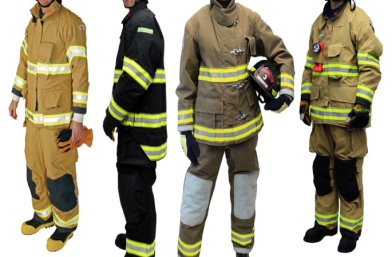
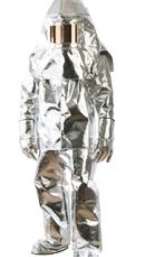
Chemical and Biological Hazard Protection
Such protective textiles safeguard the human body from direct contact with hazardous substances such as bacteria and chemicals. These textiles are used in the following instances:
- Emergency chemical and biological hazard response
- Handling of chemical waste
- Acid baths and other treatments in electronics manufacturing
- Equipment leaks or failures
- Handling of liquid chemicals in manufacturing
- Application of pesticides and other agricultural chemicals.
A typical chemical and biological protective textile consist of 3 main components:
- A textile outer layer(woven or non-woven)
- An inner layer of protective material
- Textile liner fabric.
There are 4 types of protective materials with their different capabilities:
- Air- permeable materials
- Semipermeable materials
- Selectively permeable materials (SPMS) (Protective barrier to chemicals, allow only moisture from body to flow out)
- Impermeable materials
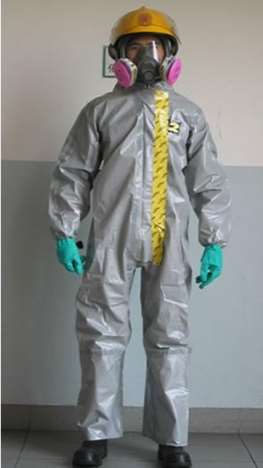
Electrical Hazard Protection
Electrical hazards include:
- Electromagnetic protection
- Electrostatic protection
Such protective garments shall consist of conductive fibres such as
- carbon fibre,
- synthetic fibres,
- metal fibres with carbon core and
- conductive polymer.
Another method like coating or laminating can be use for manufacturing this kind of fabric. The fabric with high electrical conductivity materials or application of conductive finish to the fabric
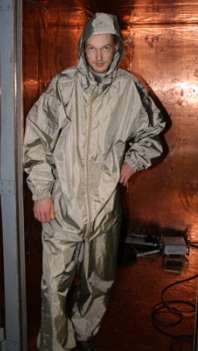
2 Agriculture Textile (Agrotech)
The word Agro textiles is used to classify the fabrics which are useful for agricultural and horticultural including livestock protection, shading, weed and insect control, and extension of the growing season.
These products are mostly used for crop protection and yield enhancement. They help to control environmental factors like temperature, water and humidity and also prevents damage to agro products from wind, rain and birds.
Technology used for agro textiles
There are different forms of agro textiles available such as:
Â
- Nets
- Sheets
- Woven
- Nonwovens
- Knitted
- Coated
Â
Fibres used
Synthetic as well as natural fibres are used in agro textiles. Fibres used in agro textiles are as follows:
Â
- Polyolefin &Nylon
- Polyester &Polyethylene
- Polypropylene
- Jute & Wool
Â
Amongst natural fibres jute and wool are used. After some time they degrade and act as a natural fertilizer.
|
Agrotech application area |
Products |
|
Agriculture |
Sunlight, Wind and weed protection, water retention, Physical damage protection. |
|
Aquaculture |
Fish and anti-fouling nets, Ultraviolet radiation Protection. |
|
Horticulture |
Ultraviolet radiation, Wind, bird and insect protection. |
|
Forestry |
Soil and weed protection for tree plantations |
|
Animal Husbandry |
|
Properties of Agro textiles
Below mentioned properties are required in selection of agro textile such as,
Must have resistance to micro-organisms
Agro textile are normally used in a moist environment prone to growth of microorganism hence it should be resistant to prevent destruction.
Should withstand solar radiation
They are placed over the cultivated areas instantly after sowing or planting. Hence, For such application, it has to withstand change in temperature.
Withstands ultraviolet radiation
To prevent degradation of molecular chains of man-made fibres caused by UV rays, they are treated with the suitable UV stabilizers.
Biodegradability
Natural fibres are used to achieve biodegradability. It gives the advantage of bio-degradation but has low service life when compared to the synthetics.
High potential to retain water
This is achieved by super-absorber fibre materials which allow holding high amounts of water for longer duration.
Protection property
Protection from the wind, temperature and humidity and to maintain desired condition of climate a micro-climate between ground and textile material has been created, which results in favourable condition for earlier harvests
Dimensional stability
This property prevents the fabric to loosen up while it is being used, as the loosening or change in dimensions of the material may lead to non-usability of the material
Flexibility
To allow the usage of agro textiles in variable areas and places
3 Packaging Textile( Packteck)
Packtech includes several flexible packing materials made of textile used for packing various goods for industrial, agricultural, consumer and other goods. It ranges from polymer based bags used for industrial packing to jute based sacks used for packaging food grains and packaging used for tea[7].
- Sacs
- Fertiliser, sand, cement, sugar, flour to dyestuffs
- Wrapping and protection applications
- Tea and coffee bags
- Nonwoven insert
- Knitted net packaging
- Silos, containers
- Canvas covers, marquee tents.
The technology used for packtech:
There are different forms of packaging available such as:
Â
- Nets
- Sheets
- Woven
- Nonwovens
- Knitted
- Coated
Â
Fibres used
Synthetic as well as natural fibres are used in packtech. Fibres used in packteck are as follows:
Â
- Nylon
- Polyester
- Polyethylene or high-density polyethylene(HDPE)
- Polypropylene (PP)
- Jute
- cotton
Â
Polyolefin Woven Sacks
Woven sacks are manufactured out of PP/HDPE materials. These are laminated or non-laminated, ultraviolet stabilised TiO2, CaCO2 or anti-slip coated.
They have following advantages,
Â
- Higher Strength,
- Light Weight,
- Minimal Leakage,
- Moisture Proof
- Durable
- Suitable for reuse
Â
Polyolefin (HDPE/PP) woven sacks are one of the packing materials used widely in the packing of cement, fertilisers, thermo plastic raw materials, food grains, sugar, Fertilisers, Chemicals, Food Grains, Cattle Feed, Salt.
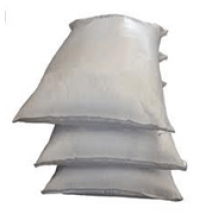
Flexible Intermediate Bulk Containers (FIBC)
FIBCs are similar to the HDPE/PP bags but that of a larger size. FIBCs are cost effective and ideal type of packaging. It is used for storage and shipping of dry bulk products. It is produced from tubular or flat PP woven fabrics. such fabrics can be coated or uncoated and they vary in terms of weights depending upon the requirements of the Safe Working Load (SWL), or Safety Factor (SF).
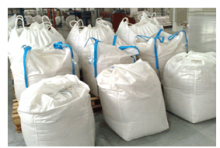
Leno Bags
Leno bags are excellent for packing & preserving material for and fruits. The Leno bags have widths between 20cm to 72cm. The mesh again is as per requirement with a maximum of 574 tapes in the warp in different colours. Leno bags on an average weigh 50g (or less). Leno bags have extra ordinary chemical and mechanical properties.
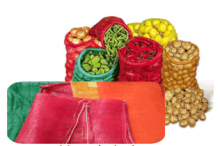
Wrapping Fabric
Wrapping fabric is made out of HDPE/PP, cotton canvas, etc. The fabric is available in roll form and can be installed on automatic machines. These fabrics are widely used in industries.
Soft Luggage
Soft luggage is made out of woven fabrics like nylon and polyester. It includes uprights, totes and duffle bags which available with or without wheels and handles. Due to cost effectiveness and lightweight, more and more people are shifting from hard luggage to soft goods.
Jute Hessian
Jute Hessian (Burlap) is quality jute and is widely used since years. it is suitable for variety range of goods. Hessian is used for bags. Currently, shopping bags are being made out of hessian fabrics. It is also used in the upholstery and home furniture. A plain woven fabric made of 100% Jute with single warp and weft interwoven; weight of fabric is less than 576 GSM. Hessian fabrics are lighter than sacking fabrics. Jute bagging material is mainly use due to openness of the weave which allows air to circulate while protecting the substances. Sacking bags, specifically it is use for storage agro-based products.
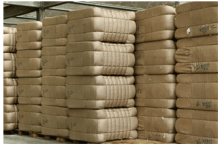
Tea Bags
Tea bags consist of a filter paper pouch with a thread, which holds the tea powder and a tag. The filter paper is made with a blend of wood and vegetable fibres. Heat-sealed tea bag paper usually has a heat-sealable thermoplastic materials such as PVC or polypropylene, inner side of tea bags are made from 100% nonwoven technical textile surface. The filter paper with 12-17 GSM non-woven material is use. The heat-sealing type tea bag paper is of 16.5 to 17 GSM approx. while the non-heat-sealed tea bag paper is around 12-13 GSM.
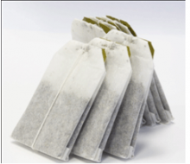
Recent development and market of technical textile:
According to techtextil, the technical textiles market is expected to hit 175 billion US-Dollars by 2020, almost doubling from 93 billion US-Dollars in 2000. Technical textiles account for 27% of worldwide fabric production[8].
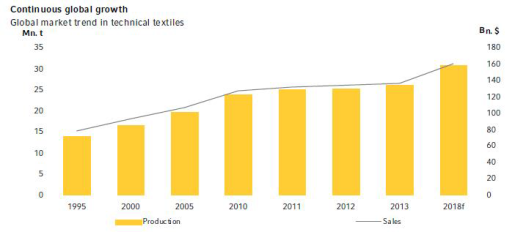
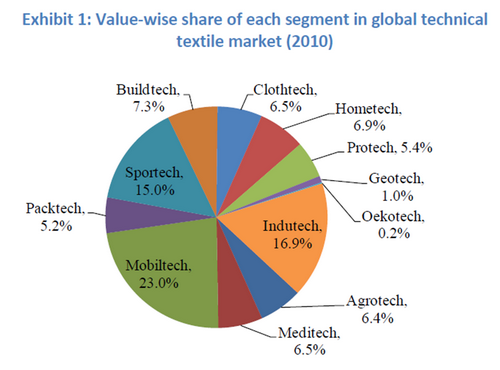
Some example of modern textile fibre & fabrics are:
Â
- Breathable artificial fabrics
- Ultra-lightweight & high-stretch synthetic fibres,
- Thin & light reflective fabrics,
- Hollow fibres
- Blended fibres
- Ultra micro fibres.
- 3-D structured fabrics.
- Metallic textiles
- Extreme Sportswear
- This exquisite fabric.
- Phase change materials.
Â
Electronic textiles are normally known as the e-textiles or smart textiles. Here are some examples of this type of textile:
- Sports shoes
- Wearable computer jackets
- Warning vests
- Photonic textiles for innovative lighting solutions
- Wearable E-Health system
- Electronic Textiles to Help Battlefield Medics
- Global positioning system (GPS) jackets.
Reference :
- “Technical Textile Overview – History, Classification, Technology, Market, End Uses”. Technicaltextile.net. N.p., 2017. Web. 16 Mar. 2017.
- The Textile Institute, textile terms and definition, tenth edition, Textile institute, Manchester, 1994.
- “Yarns Used In Technical Textiles”. http://www.indiantextilejournal.com. N.p., 2013. Web. 30 Mar. 2017.
- Horrocks, A. Richard. Handbook Of Technical Textiles. 1st ed. Abington: The Textile Institute, 2008. Print.
- Frankfurt, Messe. “Application Areas”. Techtextil. messefrankfurt.com. N. p., 2017. Web. 17 Mar. 2017.
- Scott, Richard A. Textiles For Protection. 1st ed. Cambridge: Woodhead Pub., 2005. Print.
- “Knowledge Documents, Technicaltextiles.Gov.In”. Technicaltextile.gov.in. N.p., 2017. Web. 18 Mar. 2017.
- “2016 Top Markets Report-Technical Textile”. http://trade.gov/topmarkets/pdf/Textiles_Top_Markets_Report.pdf. N. p., 2017. Web. 17 Mar. 2017.












